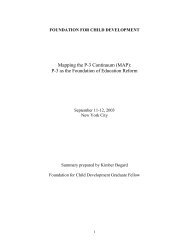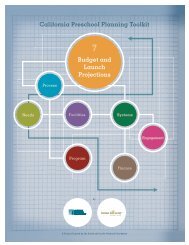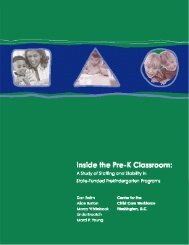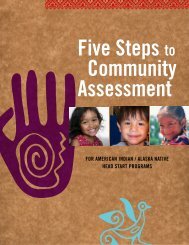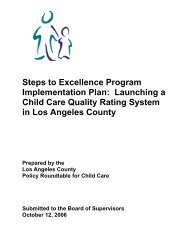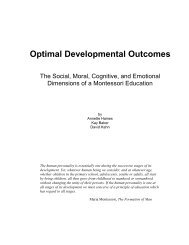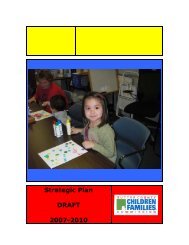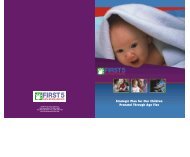Download this file - Plan4Preschool
Download this file - Plan4Preschool
Download this file - Plan4Preschool
Create successful ePaper yourself
Turn your PDF publications into a flip-book with our unique Google optimized e-Paper software.
a high school diploma. Independent study serves a wide variety of students, ranging<br />
from child actors and aspiring Olympic athletes to students at risk of dropping out. The<br />
flexibility of independent study makes it possible for some students to stay in school—<br />
students with health problems and students who are parents or who need to work.<br />
Other students choose independent study because it allows them to accelerate or move<br />
more slowly in some subjects, to make up ground they have missed in the classroom, or<br />
to delve more deeply into areas of special interest. In 2005-06, nearly 21,700<br />
independent study students graduated from high school or passed a high school<br />
equivalency exam.<br />
The California Department of Education (CDE) encourages students and parents to<br />
consider independent study through the local public school system if they are looking for<br />
an alternative to classroom instruction. In October 2005, 1,401 schools reported<br />
students engaged in independent study. For more information regarding independent<br />
study program matters, contact the Educational Options Office, at (916) 322-5012.<br />
Questions about attendance accounting should be directed to the School Fiscal<br />
Services Division, at (916) 322-3024.<br />
The CDE has published the Independent Study Operations Manual to provide<br />
information about legal requirements and program guidelines. Contact the CDE Press<br />
Sales Office at (800) 995-4099 to purchase a copy.<br />
Juvenile Court Schools<br />
Juvenile court schools provide an educational placement for students who are under the<br />
protection or authority of the juvenile court system and are incarcerated in juvenile halls,<br />
juvenile homes, day centers, juvenile ranches, juvenile camps, or regional youth<br />
educational facilities. Students are placed in juvenile court schools when they are<br />
referred and incarcerated by the juvenile court, including students who have been<br />
expelled from their school. County boards of education operate the juvenile court<br />
schools. A minimum day program for juvenile court schools is 240 minutes.<br />
Opportunity Education Program<br />
Opportunity Education schools, classes, and programs provide support for students who<br />
are habitually truant, irregular in attendance, insubordinate, disorderly while in<br />
attendance, or failing academically. Opportunity Education provides a supportive<br />
environment with specialized curriculum, instruction, guidance, and counseling;<br />
psychological services; and tutorial assistance to help students overcome barriers to<br />
learning. It is not a permanent placement but is a short-term intervention to ensure that<br />
students will succeed when they return to their regular classrooms. The use of the funds<br />
for <strong>this</strong> program is now at the discretion of the administration in each school district that<br />
receives funds from the Pupil Retention Block Grant.<br />
For more information regarding opportunity education programs, contact Dan Sackheim,<br />
Consultant, Educational Options Office, at (916) 445-5595 or by e-mail at<br />
112



